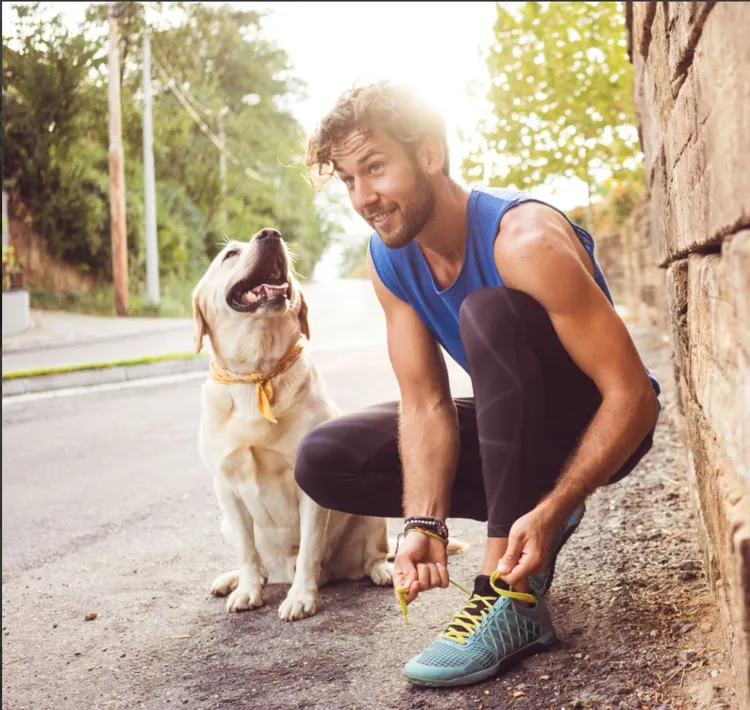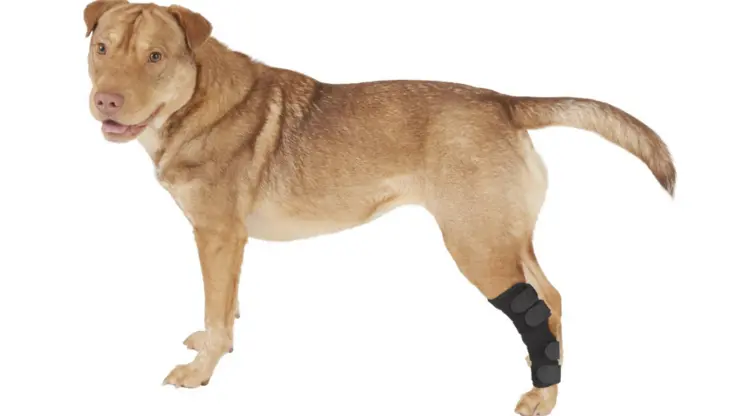If you’ve ever noticed your dog limping, struggling to jump, or showing signs of discomfort when moving, you might be dealing with a hock issue. While we often focus on more prominent areas like the hips or elbows, the hock is an essential part of your dog’s mobility. Located on the back legs, it’s the joint that allows dogs to bend their legs backward, similar to our ankles.
In this post, we’ll dive into everything you need to know about dog hocks, including common problems, how to spot them, how to prevent issues, and what to do if your dog shows signs of hock trouble.
What Is a Dog’s Hock?
The hock joint is located in the hind leg, connecting the tibia to the bones of the paw. It acts as a critical pivot point, allowing the back legs to flex and provide the powerful push that helps dogs jump, run, and climb. Essentially, the hock is the dog’s equivalent of an ankle, and just like with humans, any damage to this joint can cause discomfort and restrict mobility.
Common Hock Issues in Dogs
Several conditions can affect the hock, ranging from mild sprains to more severe chronic diseases. Here are some of the most common hock-related issues:
1. Hock Arthritis
As dogs age, the cartilage in their joints may deteriorate, leading to osteoarthritis. The hock, which bears a lot of weight and pressure, is especially prone to this. Symptoms include stiffness, difficulty walking, and swelling around the joint.
2. Hock Sprains and Strains
Just like humans, dogs can suffer from sprains and strains, especially if they’ve been overactive or taken a bad step. Hock sprains can occur from running, jumping, or simply from wear and tear. Symptoms include limping, swelling, and tenderness in the hock area.
3. Achilles Tendon Injuries
This injury happens when the tendon behind the hock tears or ruptures. It can be caused by overexertion, trauma, or even a genetic predisposition. Dogs with this injury often walk flat-footed because they can’t fully extend their hind leg.
4. Hock Dislocation
A dislocated hock occurs when the joint moves out of its natural position. This can happen due to a fall, a collision, or even from an underlying health condition like degenerative joint disease.

How to Detect Hock Problems
Detecting hock issues early is crucial to preventing further damage. Here are some common signs that might indicate a problem:
1. Limping or Lameness
One of the first signs that something’s wrong with your dog’s hock is limping or favoring one leg. If your dog hesitates to put weight on a leg or avoids walking altogether, it’s time to investigate further.
2. Swelling or Heat
Feel your dog’s hock. If it’s swollen, warmer than usual, or shows any signs of tenderness, this could be a sign of inflammation or injury.
3. Difficulty Jumping or Climbing
A dog with a hock issue might struggle with activities they once enjoyed, like climbing stairs, jumping into the car, or even running in the yard.
4. Unusual Gait
If your dog is walking flat-footed or seems to be moving in an unnatural way, it could indicate a problem with the Achilles tendon or the hock joint itself.

Preventing Hock Problems in Dogs
Prevention is always better than cure, and there are a few key ways you can help your dog avoid hock issues.
1. Maintain a Healthy Weight
Excess weight puts extra pressure on your dog’s joints, including the hocks. Maintaining a healthy weight through diet and exercise can significantly reduce the risk of joint problems.
2. Regular Exercise
Keeping your dog active helps maintain joint flexibility and strengthens the muscles around the hock. However, avoid overly strenuous activities, especially for breeds prone to joint issues.
3. Provide Joint Supplements
Glucosamine and chondroitin supplements can help support joint health, especially in older dogs. These supplements can help slow the progression of arthritis and maintain healthy cartilage.
4. Protective Gear
For working dogs or those involved in high-impact activities like agility, consider using hock wraps or protective gear. These provide additional support to the joint and can help prevent injuries.
Treatment Options for Hock Problems
If your dog is already experiencing hock problems, there are several treatment options available. The treatment will depend on the severity of the issue, so it’s essential to consult a vet for a proper diagnosis.
1. Rest and Medication
For minor sprains or strains, rest is often the best treatment. Your vet may also prescribe anti-inflammatory medications to reduce swelling and pain.
2. Physical Therapy
In cases of arthritis or tendon injuries, physical therapy can help improve mobility and strengthen the muscles around the hock. Hydrotherapy, where dogs swim or walk on underwater treadmills, is particularly beneficial.
3. Surgery
For more severe cases, such as a torn Achilles tendon or a dislocated hock, surgery may be necessary. This involves realigning the joint or repairing the tendon, followed by a recovery period that includes rest and physical therapy.
4. Joint Injections
In cases of severe arthritis, your vet might suggest steroid injections or platelet-rich plasma therapy to reduce inflammation and promote healing within the joint.
When to See a Vet
If you notice any of the symptoms mentioned above, it’s essential to consult your vet as soon as possible. The earlier a hock issue is detected, the easier it is to treat, and you can prevent further damage. Delaying treatment could result in long-term mobility issues or chronic pain for your dog.
Keeping Those Hocks Healthy
Our dogs rely on their hocks for every leap, sprint, and chase. Keeping those joints healthy is essential to ensuring a long, happy, and active life for your pup. By maintaining a healthy weight, providing joint support, and watching for early signs of trouble, you can keep your dog’s hocks in tip-top shape.
If you notice any signs of hock problems, don’t wait—reach out to your vet and get your dog back to their happy, bouncy self in no time.



